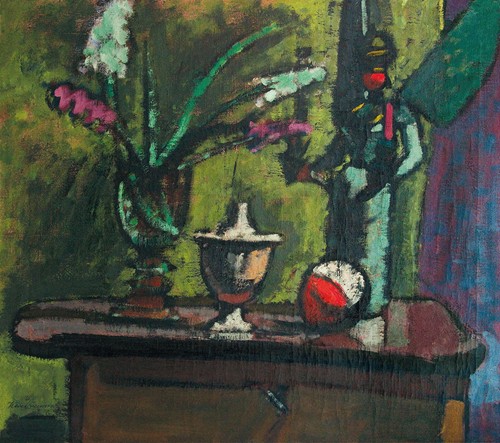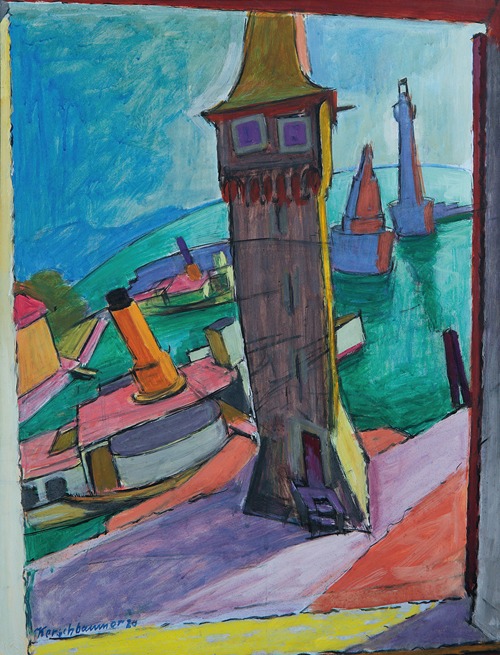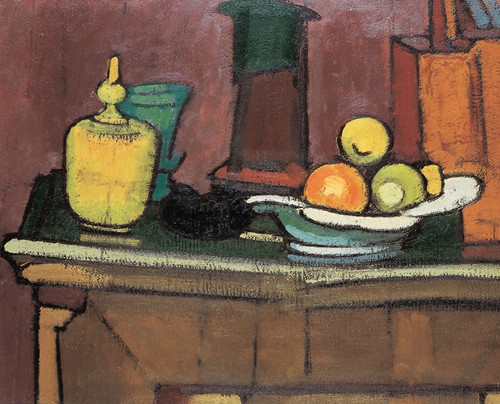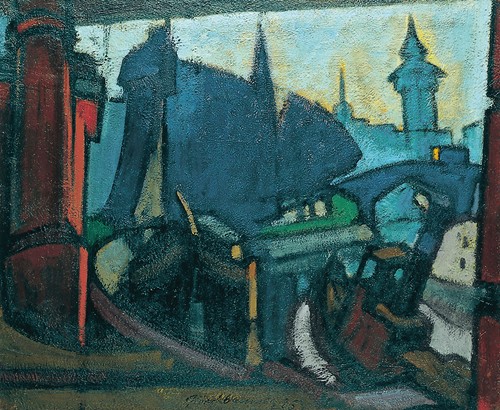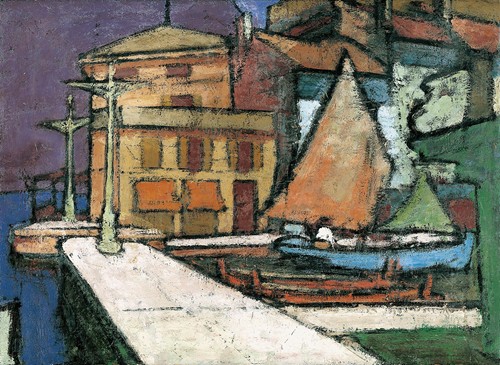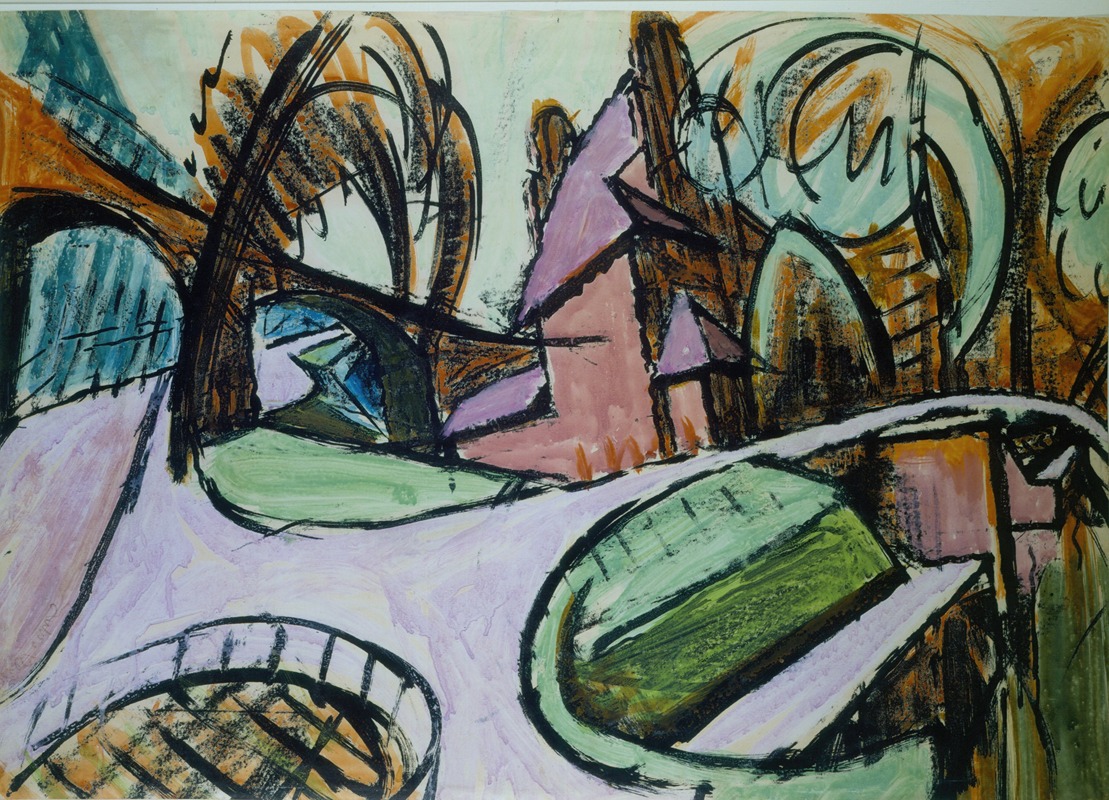
Anton Kerschbaumer was a German expressionist painter.
Anton Kerschbaumer was born on November 20, 1885 in Rosenheim. From 1901 to 1908, he studied at the School of Applied Arts in Munich under Professors Maximilian Dasio and Julius Exter. There he passed the exam to become a drawing teacher. In 1905, he won a competition for advertising designs for the joint advertising of entrepreneurs Ludwig Stollwerck and Otto Henkell. Other prizewinners included the artists Julius Diez, Eugen Kirchner, Friedrich Stahl, Albert Klingner, Ludwig Hohlwein, Fritz Klee, Bernhard Halbreiter, Elly Hirsch, Johann Baptist Maier, Georg v. Kürthy, Fritz Helmuth Ehmcke, Paul Leuteritz, Otto Kleinschmidt, Ulrich Hübner, Anton Hoffmann, Otto Ludwig Naegele, Peter Würth, Ernst Oppler, A. Altschul, Ant. Jos. Pepins and August Geigenberger. In 1908 he moved to Berlin, where he was a student of Lovis Corinth for a time, as was Paul Kleinschmidt. In Berlin he also met Martin Bloch (1883–1954). He was impressed by the Post-Impressionists Paul Cézanne, Vincent van Gogh and Henri Matisse and allowed himself to be influenced by them in his work, but ultimately turned away from Impressionism. He was able to exhibit for the first time in 1914, at the home of the art dealer Israel Ber Neumann.
During World War I, Kerschbaumer was in Ostend (Flanders) in Erich Heckel's volunteer ambulance train, where the painter Max Kaus, the writer and lawyer Ernst Morwitz and the painter Otto Herbig also worked as nurses. From Heckel's art and lithographic work, he received lasting impressions and inspiration. In 1919, he returned to Berlin and took part in a first large collective exhibition at the publisher Paul Cassirer. Most of his works from the 1920s were created in a working and “ideas community” that resumed the traces of the “Brücke” group of artists, which had been dissolved in 1913; Max Kaus and Walter Gramatté were also involved.
He married in 1921 and spent most of the summers in the following years with his wife Friederike at Chiemsee and Ammersee. In Würzburg in the 1920s, he came together with Erich Heckel, Otto Modersohn, Friedrich Ahlers-Hestermann and other artists during joint painting trips to the “Neue Welt” with the painter Gertraud Rostosky. In 1926, he founded an art school in Berlin together with Martin Bloch; Kurt Scheele (1905-1944), among others, was a student here. In the same year, he took part in a collective exhibition of contemporary artists at the Nierendorf Gallery in Berlin. He spent time painting in Malcesine on Lake Garda in 1927 and 1928. In 1929, he traveled to Carolles in Normandy and to Paris. In 1930, he was a three-month scholarship holder at the German Academy Villa Massimo in Rome. Here he met the expressionists Karl Schmidt-Rottluff and Otto Herbig again, with whom he then spent the summer in Malcesine. He fell seriously ill in the winter of the same year and died on August 2, 1931 in Berlin-Tegel.
During the Nazi era, some of Kerschbaumer's works were shown at seven exhibitions. At the same time, two oil paintings, five watercolors and one lithograph by the artist were confiscated as “degenerate art”. Two works were destroyed, the rest are now considered lost.
